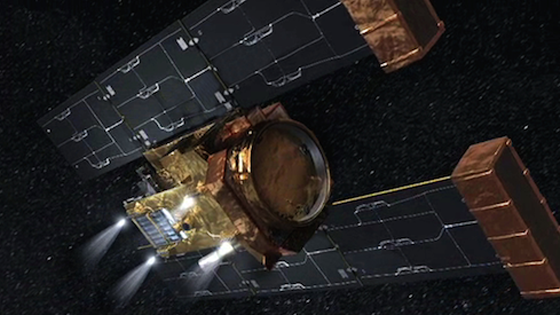NASA has recovered 7 “PRECIOUS” particles from the solar system’s birth
Wooorrrddd. While the Big Bang may have given rise to like, all of this, our solar system is a bit more of homey place. I can just feel Sol-related news more. I mean, it’s probably — I don’t want to sound cynical but it’s probably — the only solar system I’ll ever call home. So news that they’ve captured 7 particles from its birth is pretty gnarly, man.
It’s been years since researchers overseeing NASA’s sample-return Stardust mission first reported that the spacecraft had retrieved traces of cosmic dust – the tiny, interstellar particles that make up stars and planets. This week, they announced the net haul of their cosmic catch: Seven particles. SEVEN.
Together the particles weigh just 3.1-trillionths of a gram. Somehow, the Stardust team’s description of the sample (the first such particles ever collected in space and returned to Earth) as “rare,” “precious” and “extremely difficult to locate” still feels like a bit of an understatement.
According to ScienceNOW, the successful return of the interstellar particles, reported this week at the Lunar and Planetary Science Conference, marks “the first time scientists have laid their hands on primordial material unaltered by the violent birth of the solar system”:
For a total of 200 days in 2000 and 2002, Stardust stuck out its tennis racket-like dust collector panel to catch interstellar dust as the solar system and the spacecraft with it plowed through the galaxy. The panel’s centimeter-thick blocks of aerogel—”frozen smoke” made of airy silica that is 99.8% empty space—were intended to slow and retain dust particles without vaporizing them. That would be no mean feat, as interstellar particles are a thousandth the mass of comet dust and can be traveling well in excess of 15,000 kilometers per hour.
Once the sample panel was back on Earth, the problem quickly became finding any collected particles embedded in the aerogel. Out of desperation, Stardust team members called on 30,714 members of the general public… The ‘dusters’ of the Stardust@home project volunteered to examine microscopic images taken down through the aerogel. They used the world’s best pattern-recognition system — the human eye and brain — to pick out the telltale tracks left by speeding particles.
Scientists are now faced with the exacting task of further confirming the particles’ interstellar origins, which will involve transferring them from the aerogel to instruments that will assess their isotopic composition. This, says Stardust team member Andrew Westfal, makes these “the most challenging extraterrestrial samples ever.” After all, he says, “it would be very easy to lose them.” (Again with the understatements.)




